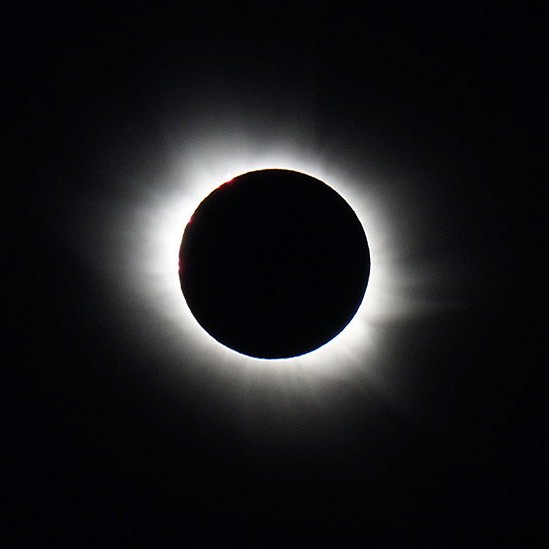
JEFFERSON CO., Pa. (EYT) – Area residents will have the opportunity to witness a solar eclipse on Monday afternoon.
According to space.com, a total solar eclipse occurs when the disk of the moon appears to completely cover the disk of the sun.
In Pennsylvania, eclipse watchers won’t see a total solar eclipse, but they can expect about three-quarters coverage.
In Jefferson County, individuals can expect to see the moon cover 77.4 percent of the sun. The moon will be in the sun’s path starting at 1:12 p.m. and continue until about 3:54 p.m.
The best time to see the peak of the eclipse will be 2:35 p.m.
During totality, when the disk of the sun is completely covered by the moon, it is safe to look up at the celestial sight with the naked eye.
Binoculars are helpful for seeing more detail in the solar corona. Telescopes are not necessary, but some skywatchers may use low-powered telescopes to observe the sun’s atmosphere during totality.
Note that telescopes, binoculars, and cameras must be fitted with solar filters before and after totality. Pointing an unprotected lens directly at the sun can damage the instrument. NEVER look at the sun through binoculars, a telescope, or a camera lens without a solar filter; the magnified light can damage your eyes faster than looking at the sun unaided.
Skywatchers outside the path of totality will still be able to see a partial solar eclipse. Solar viewing glasses allow skywatchers to look directly at the moon’s progress across the face of the sun. You can also view the progress of a partial solar eclipse using a pinhole camera.
For more information, see space.com’s complete guide on how to view the eclipse safely.
The path of totality is a 70-mile ribbon stretching from Lincoln Beach, Ore. to Charleston, S.C. It passes through Idaho, Wyoming, Nebraska, Kansas, Missouri, Illinois, Kentucky, Tennessee, Georgia, North Carolina, and South Carolina.
Those in that span will be able to see the first total solar eclipse visible in the United States since 1979.
Outside the path of totality, skywatchers in the continental U.S. will see a partial solar eclipse, in which the moon appears to take a bite out of the sun’s disk.
Eclipse glasses, which are required to safely view the eclipse, are nearly sold out.
Copyright © 2024 EYT Media Group, Inc. All rights reserved. Any copying, redistribution or retransmission of the contents of this service without the express written consent of EYT Media Group, Inc. is expressly prohibited.








